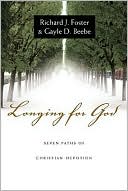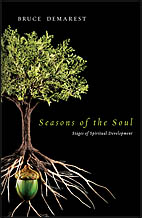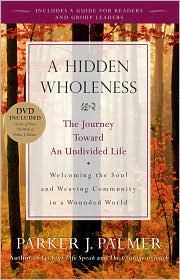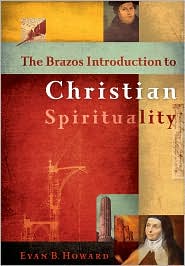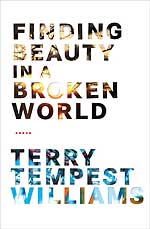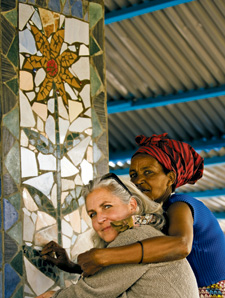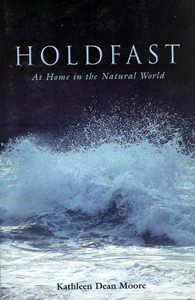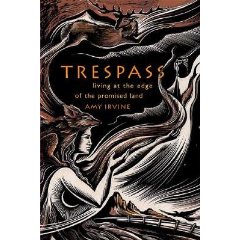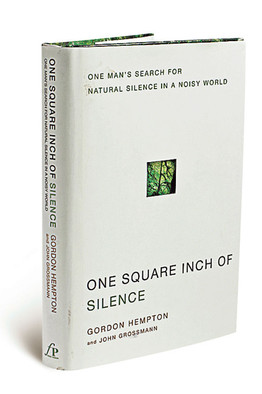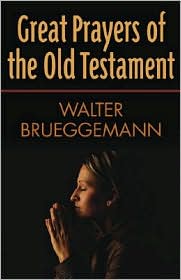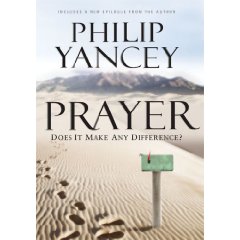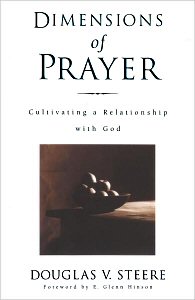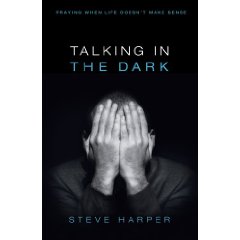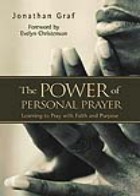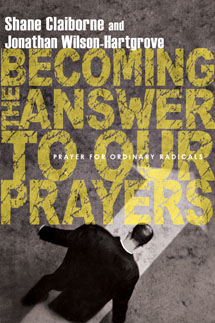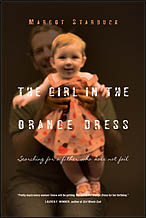 I really, really wanted to write this earlier in the week, but I was busy proving to be a less than perfect dad. Consider this a Father’s Day confession, or a clever way to introduce a book about the search for a father who is truly there for his child. The Girl in the Orange Dress: Searching for a Father Who Does Not Fail (Likewise. $16.00) by Margot Starbuck is a great book to tell you about on Father’s Day weekend, although it is not about fathering. It is about being a child of a father. Or fathers, as the case may be.
I really, really wanted to write this earlier in the week, but I was busy proving to be a less than perfect dad. Consider this a Father’s Day confession, or a clever way to introduce a book about the search for a father who is truly there for his child. The Girl in the Orange Dress: Searching for a Father Who Does Not Fail (Likewise. $16.00) by Margot Starbuck is a great book to tell you about on Father’s Day weekend, although it is not about fathering. It is about being a child of a father. Or fathers, as the case may be.
Margot Starbuck is one heckuva great writer, a breezy, witty gal who will be (or ought to be) compared to Donald Miller (Blue Like Jazz) and Lauren Winner (Girl Meets God), perhaps even the queen of all memoirs, Mary Karr. She is less bohemian than Miller, not as elegant as Winner, but (sorry Lauren) funnier by far. (And while making comparisons, her life was not as hardscrabble as Karr chronicles in The Liars Club and Cherry but for some reason it made me think of those amazing works. Starbuck is raised in a seemingly safe suburb of Chicago.) Her quick wit and self-consciousness—how do good memoirists recall such details about their days lived out in previous decades?—serves us well, as The Girl in the Orange Dress is a rollicking story, moving quickly with some laugh out loud lines and some very clever tales, and yet has this wonderful novelistic arch. It is a powerful read.
It gets heavier as it goes as Margot struggles to reconcile a loving God who calls Himself Father with the lack of faithful fathers in her own life. I don’t want to spoil the story, but she is searching for her birth parents after her adoptive parents divorce, re-marry, divorce again. Early on, she easily sees what she considers the good gift in having many caring adults in her life, and doesn’t quite see the anguish to come as she becomes more aware of issues of abandonment and family dysfunction.
Margot tells of her high school years, her church life and coming to more robust faith, even choosing to go to an evangelical Christian college (although, admittedly, not for the most pious of reasons.) The stories set in this portion of the book ring so very true; anyone now in college, longing for intentional community, learning to serve the poor and work for justice, trying to discern vocation, to make a difference and make ends meet, and (yes, of course) falling in and out of love–with all the requisite embarrassments and tomfoolery—will surely relate to these chapters. She gets this part really right and I recommend it to college students and parents of college students.
Ms Starbuck is quite a pistol in those years, the kind of 80s punk chic grrrl who wears maybe different color converses and dies her hair weird colors, showing off multiple piercings. Her mom (I can just hear it) is concerned about her wardrobe, even as she tries to be supportive, more or less. Here she describes her look:
…I looked like the strange offspring of Pippi Longstocking and G.I. Joe. Blond spiky hair, candy-cane striped tights, mismatched socks, rhinestone jewelry, and daisy-painted combat boots did not a mothers dream make. When I look at the short stack of pictures I have from the period, I am forced to admit that I cannot distinguish from my clothing a typical school day from our high school’s annual Wacky Tacky Day. Could we really have celebrated it five days a week?
She continues writing about her decision to go to Westmont College, a short ride from the Southern California beaches. She and her mom, while visiting, noted the tastefully dressed girls in cute sandals. By this time, Margot had a half-shaved head, visiting campus in cut off overalls. She reflects, “Mine had to have been the only family in the Midwest to hope that the child they were sending off to college in southern California might actually be domesticated by the experience. My family would, of course, be sorely disappointed.”
“I would be changed there”, she continues, “but not in a way I ever expected.”
Navigating a conservative religious ethos while being an artsy firebrand is not an uncommon journey for many younger friends, and her journey through these good years is well told. Finally, there is the sojourn to Portland. An epic road trip, talking about justice and romance and Providence and beauty? In a blue Chevy Nova, no less? Move over, Donald Miller, that open road stuff ain’t just for the edgy Christian boys any more…
Yet, these lighthearted escapades and heart-wrenching experiences (she does inner city work in Camden for a summer, has some relationship and spiritual crises, a friend becomes a single mom) are backdrop for what is clearly more than a postmodern evangelical coming of age narrative. Girl in the Orange Dress tells of this desire to find a God who can be the parent who does not reject her, who can heal her deep woundedness, who can bring her Home.
Our grrrl ends up donning some somewhat more reliable cloths and ends up at Princeton Seminary. And how I appreciated the story of a moderately evangelical, slightly charismatic, intuitively feminist student at a liberal seminary where one may not use masculine pronounces about God. She had served in reconciliation work in South Africa as apartheid fell; yet here, abstract post-colonial theology ruled, oddly without much traction for the real poor that she so obviously served herself. Ideologically strict males yell at women who have more traditional faith for not being pro-woman. Hmmm. Unless one is experienced in this arcane theological academic climate, her observations in the chapter “Welcome to Oz” may seem surprising. For many, mainline Protestant seminaries nearly ruin one’s vibrant faith and she tells it fairly.
She moves on, through very painful physical disabilities and the trajectory towards reunion (or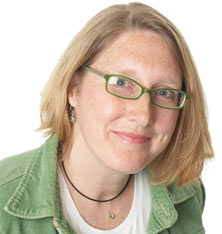 not?) with her long lost birth mom and dad. She works at a church while seriously depressed. She sleuths and prays and yells at God. Suffice it to say that I stayed up way too late reading this thing, as I had to know what comes next. I even read while on a Greyhound bus, a dizzying feat for those of us who are easily made queasy. I had tears in my eyes at one point, savoring the pathos and joy and goodness of insights gained the hard way. And the poignant story of the Pink Post-It note is worth the price of the book, right there (especially if you have any tenderness for aging grandparents.)
not?) with her long lost birth mom and dad. She works at a church while seriously depressed. She sleuths and prays and yells at God. Suffice it to say that I stayed up way too late reading this thing, as I had to know what comes next. I even read while on a Greyhound bus, a dizzying feat for those of us who are easily made queasy. I had tears in my eyes at one point, savoring the pathos and joy and goodness of insights gained the hard way. And the poignant story of the Pink Post-It note is worth the price of the book, right there (especially if you have any tenderness for aging grandparents.)
This is a fun book, and, I think, it is an important one. Whether you have, who know someone who has had, experience with adoption, or know adopted kids or foster parents or have divorced parents in your extended circle of family and friends, or a clay-footed father, this matter—knowing we are beloved and accepted by a God who is there for us—is of extraordinary significance.
Near the end, Margot tells of seeing an unusual church sign–not that unusual, oddly, since our churches are so often theologically murky and grossly sentimental—that said something dumb about good parents, implying that it would be “unthinkable” for a parent to fail a child. Ahh yes, s
he is driven to knock on the door, to ask the pastor what in the heck he meant by this. Didn’t he know? It is all too thinkable for parents to do hurtful things. Ask her. Ask me.
The Girl in an Orange Dress: Searching for a Father Who Does Not Fail is a beautiful gift for anyone, a perfect kind of book because it is easy to read, a bit lighthearted (no, it is downright funny) and yet packs a notable punch, in the story-line, the sheer emotions in conjures, and in the theological truths it conveys. It is published by an edgy recent imprint by one of our most respected publishers, IVP. (They did the truly stunning memoir Stone Crossings by L.L. Barkat a year or so ago.) Shauna Niequist (Cold Tangerines) calls it “lovely and challenging” and novelist Lisa Samson says it is for “anyone who needs to know, really needs to know, how much God loves his children.” Happy Father’s Day, indeed.
Check out the publisher’s webpage that has samples of her writing, endorsements of the book and such, but please come back and order it here. Thanks.
BLOG SPECIAL
$4 off
regularly $16
mention the “orange” special and pay only
plus shipping
Hearts & Minds 234 East Main Street Dallastown PA 17313 717.246.3333
I mentioned the memoirist Donald Miller. I presume you know his books published by Nelson, which have sold over a million copies. Blue Like Jazz is his most popular. His second (and more substantive) is Searching for God Knows What, and his epic road trip saga is Through Painted Deserts (first discovered by Terry Glaspy at Harvest House, originally titled Prayer and the Art of Volkswagen Maintenance, although now considerably expanded.) Mr. Miller has co-authored a book about the absence of fathers, not as witty or precocious as his others, but a deeply moving story of a man who stepped up and mentored him, since Miller’s father had left the family. It is called To Own A Dragon: Reflections on Growing Up Without a Father and it is very highly recommended for fathers, young men, or anybody who cares about them.
And, for the record, I truly recommend Starbuck’s The Girl in the Orange Dress for men and women readers, and, likewise, Miller’s To Own A Dragon is not just for men, although I suppose it may be most helpful to hurting guys. Or dads who need reminded of the value of their love.
Donald Miller’s very long-awaited fifth book, A Million Miles in a Thousand Years: What I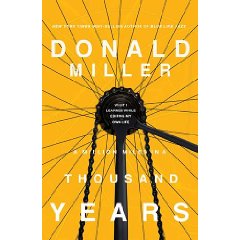 Learned While Edited My Own Life is due out in hardcover at the end of the summer. It will detail one man’s opportunity to edit his life as if he were a character in a movie, which he sort of is. You can order it now if you’d like, and be among the first to receive it in September.
Learned While Edited My Own Life is due out in hardcover at the end of the summer. It will detail one man’s opportunity to edit his life as if he were a character in a movie, which he sort of is. You can order it now if you’d like, and be among the first to receive it in September.
Check out his blog, and tell me if he isn’t trying to look like Tom Waits. Great stuff. We stock the DVD projects he talks about, too, btw (The Open Table and Free Market Jesus.)

